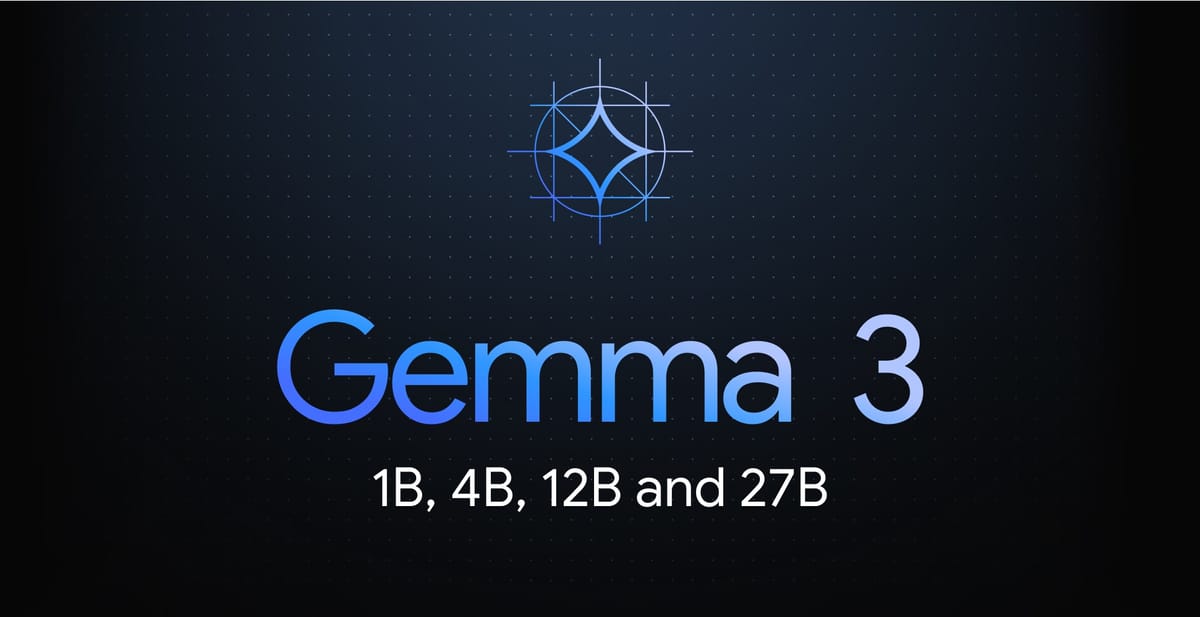
Google DeepMind continues to push the boundaries of open AI models with today's launch of Gemma 3. Their new model is designed to offer developers more flexibility, power, and efficiency. With support for 140+ languages, a 128K-token context window, and multimodal capabilities, the latest release aims to be one of the most capable AI models available for single-GPU or TPU deployment.
Key Points:
- Flexible Model Sizes – Comes in 1B, 4B, 12B, and 27B parameter configurations for different performance needs.
- Multimodal Capabilities – Supports both text and image analysis, expanding potential AI applications.
- Extended Context Window – Processes up to 128K tokens, enabling more complex reasoning and long-form document comprehension.
- Built-in Safety – Introduces ShieldGemma 2, a new image safety classifier to enhance responsible AI development.
Since its launch last year, Google says the Gemma series has been downloaded over 100 million times, making it one of the most-used open AI model families. With Gemma 3, DeepMind is introducing significant upgrades, including a larger context window (128K tokens) for handling long documents, multimodal capabilities for text and image understanding, and a range of model sizes (from 1B to 27B parameters) optimized for different hardware setups.
More Power, More Flexibility
One of the standout improvements in Gemma 3 is its multimodal capability, allowing developers to build AI applications that analyze both text and images. This makes the model well-suited for use cases such as visual search, document processing, and AI-powered customer support.

Based on the image, the button that likely turns up the heat is 暖房 (Danbou). "暖房" means "heating" in Japanese. It's the button you'd press to activate the heating function on the air conditioner/climate control system. The button with the plus sign (+) might adjust the temperature after you've selected the heating mode.
The expanded context window also enhances the model’s ability to handle long-form reasoning and large-scale document understanding, putting it on par with top-tier proprietary models. Additionally, DeepMind has optimized Gemma 3 for single-GPU or TPU deployment, making it accessible to a wider range of developers.
A Focus on Safety with ShieldGemma 2
To address concerns around AI-generated content, DeepMind is also launching ShieldGemma 2, a new image safety classifier built on Gemma 3’s architecture. The tool is designed to identify potentially harmful images across three categories—dangerous content, explicit material, and violence—giving developers an easy way to integrate safety checks into their applications.
The Expanding “Gemmaverse”
DeepMind continues to invest in fostering an open AI ecosystem. The company highlighted how the Gemma community has already created over 60,000 model variations, fine-tuning them for specialized use cases. Developers can access Gemma 3 through Google AI Studio, Hugging Face, Kaggle, and other platforms, with direct optimizations available for NVIDIA GPUs, Google TPUs, and AMD ROCm-based hardware.
With Gemma 3, Google DeepMind is doubling down on its vision of open, efficient, and responsible AI, providing developers with powerful tools to build the next generation of AI-powered applications.

